1979 Dodge Spacevan
Posted by Chris Graham on 8th December 2020
Rootes vehicle enthusiast Dean Reader explains the experiences he had while owning and restoring a 1979 Dodge Spacevan.

1979 Dodge Spacevan: The Dodge as bought from Keith Maunder and at the ‘restore or scrap’ stage.
Are we a sad lot or what? It’s bad enough when we lose a loved one and even though time passes, you understandably never forget. But how many of us feel the same way about our past cars and commercials? Have you ever shed a tear when you watched your beloved classic drive off with another owner or, heaven forbid, on a banger truck? This is the story of just one of my past loves, and how I restored it on a budget.
Sweet sixteen
Having had a family which, since the 1970s, stuck with cars from the Rootes family, it was probably always natural that I would follow in these foRootes Groupotsteps once I was old enough to drive. Sure, other cars came and went, but it was always the ‘Arrow’ series of cars that both my dad and brother often returned to. Part of this was due to the fact that we lived in Rugby until 1977, so the factory at Ryton-on-Dunsmore was always a special place to us all, as was Coventry.
Before my 16th birthday in 1988, the previous handful of years was really the ‘Rootes period’ and, among the vehicles I remember were several Commer PB camper vans which dad owned. Many a time I spent lying on the floor between the bunks looking upwards as the van just rocked gently over the bumps, and the odd occasion when the narrow front track got stuck in road undulations and thumped hard. But it was that suspension that made mum feel sick and so he had to sell it.

Just one panel that needed filling and sanding down.
Having been handed the keys to my brother’s Hillman Hunter after passing my test, I kept it for more than 10 years while other classics came and went. Among these were various commercials; the bug was in me. I had a Bedford HA, Renault 4s, Morris Marina vans and an Ital version that I fitted with hydraulic suspension. The sump was ½in off the road and it moved up, down and from side to side. The front torsion bars were removed and an ‘accumulator’ system was installed… essentially the front suspension was in the rear!
But finally, I bought a 1972 high-top Commer, which we presume was a former camper that had been stripped-out and made into more of a ‘hippy van’. I also bought a Commer Olympian converted by Haylett, for spares (restore?). These were passed on but, looking back, I should have kept them, and many others…
Still soldiering on
More classics came and went, but I still hankered after a larger, 15cwt van and, ideally, it needed to be a Commer. But nothing was really appearing cheap, even when eBay appeared in 1995. Then, in about 1999, my mate Keith Maunder surprised me with a cracker. He arrived one day in a 1979 Dodge Spacevan, which was dinged and dented and looked like a typical throwback from an episode of The Professionals.

Despite doing paper mock-ups, signage was still too small.
It was in red oxide primer and had a black roof, I seem to recall. Keith didn’t know its history, but did have to re-new various suspension joints, sort out the steering (which was critical on those), and re-new the brakes throughout. He attended various events with it, including going all the way from Devon where we lived, to the Bromley Pageant of Motoring.
But what he really wanted, having dabbled with several examples, was a proper campervan or motor home, and so he bought a tried and trusted VW Type 2. Sadly, though, this later went up in flames on the motorway after a fuel line ruptured – a common fault on these, so I’m told.
Anyway, you can all guess where that Dodge was heading. Cash was exchanged, it became mine and I loved it. What really attracted me, was the fact that the actual panel sides were flawless, without the merest hint of a dimple. Those who have driven classic vans with narrow tracks like these and the Standard Atlas, Morris JUs etc, will know how wallowy they can feel. But you know that they hold the road well, even into tight bends, and they also produce a satisfying turn of speed thanks to that 1,725cc engine which came from the Arrow cars – as did the Hillman Hunter rear lights. But all this serves to remind us of the van’s history.

Mates rates – the option of a cheap respray is long gone nowadays.
A brief history
The original appeared in 1959 as the FC and, naturally, used a variety of Rootes’ parts; Humber front suspension and Hillman 1,500cc engine, for example. However, regarding the latter, overheating was a common fault due to the lack of a proper front grille. Straight away, this was sorted with the series II of 1961, and a small opening behind the trim was added. The 1,600cc engine was then fitted for a short while and, in 1967, the 1,725cc Hunter engine (cast iron head only) was installed, together with minor revisions inside plus new grille/indicator mounts outside. Also, an automatic gearbox and overdrive were offered as options. As was common, too, a Perkins 4108 diesel was also available. It was now called the ‘PB’, but its overall look hadn’t changed.
Having been renamed the ‘Spacevan’ in the early ‘70s, the Commer name was soon dropped and ‘Dodge’ added in 1976, Rootes having by been bought by the American Chrysler company in the late 1960s. But the writing was on the wall for this traditional, British manufacturer, and one condition of a government intervention was to re-vamp the ageing commercial, but only in keeping with the style of the time. This meant more interior revisions but, primarily, it was the outside that was worked on and, in 1977, the new Spacevan was born… and looking happier if you stare at that front end long enough!

The van back in stunning white. Let the re-fit begin…
The bumpers were now huge, girder-like things, and a full-width plastic grille encompassed the headlights and one-piece indicator units. But it still remained generally unchanged; something no other manufacturers of bigger vans could say. However, some would argue that with the likes of Ford and Bedford, they indeed did progress to create a better van.
It certainly remained the same inside, with a colossal 200ft3 capacity, a small bulkhead to stop goods sliding forward and flat wheel-arches. Wide-opening doors all round also helped with loading. Up front, the same panoramic view and high seats ensure plenty of vision, and the forward control layout meant you could see better for parking (although I tried not to think about a head-on collision). The Hi Line model had better comfort and equipment throughout.
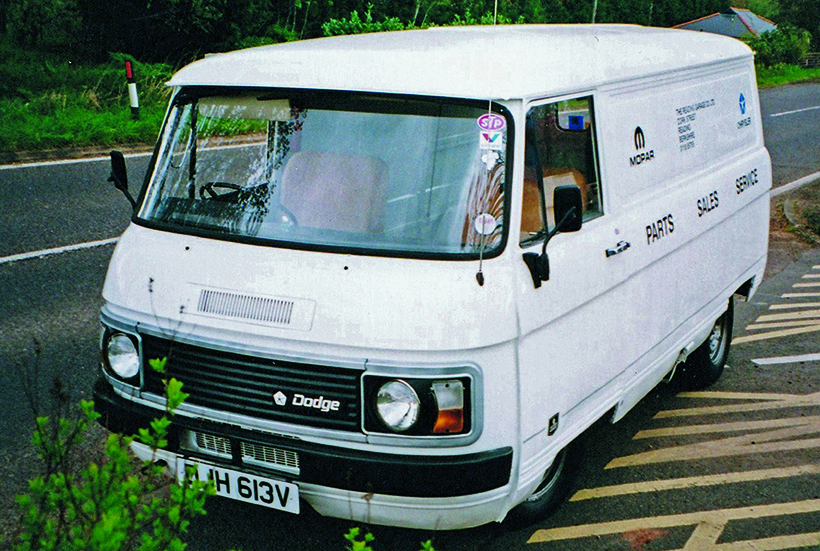
All finished, looking stunning and as period perfect as it could be.
Underneath, it still had independent front suspension with coil springs and wishbones – advanced back in 1960, when others were on beam axles. At the back it was typical leaf springs with shocks all round. The brakes were duo-servo and I can vouch they work, with my Dodge stopping on a dime; the handbrake is on the front wheels.
Payload now came in just 18 and 22cwt (a 15 was in the first line-up) and, aside from the van and minibus, chassis cab/cowls were also available for outside body builders as the photos show. These were more known for their use within Post Office Telephones/British Telecom, before finally bowing out in 1983, thanks to the ‘mixed-raced’ Talbot Express.

The flutes seen in the roof panel and included to aid strength and minimise drumming.
Time and space unite
I don’t mind admitting that I don’t have any welding skills, so replacement of panels was certainly a no-go for me. What’s more, back in those days, specialist suppliers of Commer panels and, indeed, panels in general, were non-existent. From the outset, it was a case of make do and mend. I simply started at the front and worked clockwise. After rubbing that primer down and still finding red and original white underneath, any dings and dents were skimmed with filler. I found plenty of welded repairs in all the usual areas, so these were simply tidied up with a grinder. Other, non-structural holes had P40 added and were then blended in.
Methodically working my way forward, I sanded, filled, sanded and primered again, just to give the surface a protective coating as it was already booked in for a cheap respray a few weeks later. The wheels were sanded down, primered and rattle-canned a chrome/grey colour. The grille was removed and sprayed in its proper colours, and the front bumper was sent to a friend to be ‘twisted’ back into alignment then sprayed black.
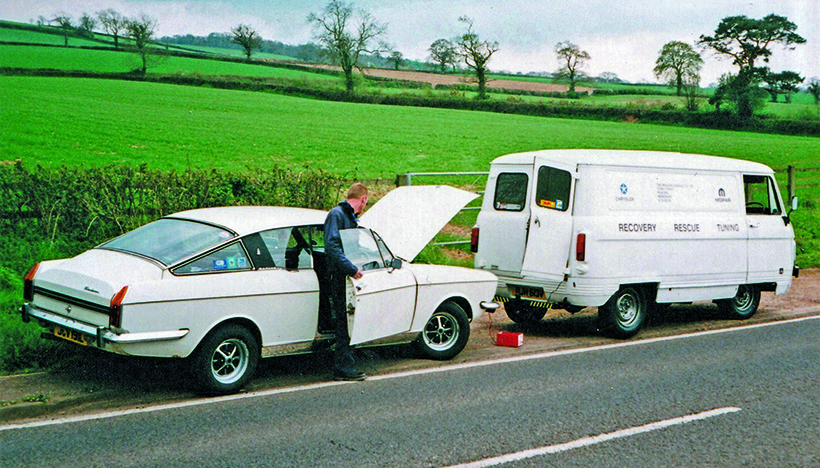
This could easily be a period photograph from 1979, at the scene of a roadside rescue.
The inside was left as it was. However, I spent a week painting all the inside in white household gloss – laying on a table to paint the roof didn’t do my back any good, but the result was bright and stunning, even though the fumes I was forced to breathe as I travelled to work, made me smile at people I didn’t know!
The biggest decision was what colour to do the outside. I made a whole load of mock-up ideas, ranging from having a black funereal guise all the way to something with a graffiti-style effect advertising a punk/New Romantic band, as may have been the norm in 1979. In the end, I plumped for a traditional garage theme, with white paint. So, a mock-up of writing/pictures was made in paper and stuck on the side. I found a dealer brochure that named a Chrysler dealer in Berkshire which was where the vehicle was originally registered, so that was added. I also had some stickers made up including Smurfs (which again are now seen on eBay). All the graphics cost just £200; far cheaper than it would be now!

A 1976 brochure shot of the Dodge Spacevan’s interior.
Memory-jogger
The look achieved brought back many memories for the public. However, I did some shows where I wasn’t judged – or given a plaque – because the judges assumed I was from the auto jumble, and was there as a trader, not an exhibitor!
The van was taken to the local garage for some tidying, after which it was rubbed down and oven-baked, all for about £400. Sadly, those days of cheap, back-street paint jobs are long gone. It was then used daily for work, attending car shows and camping trips, but then personal circumstances intervened, and it was sold (at a big loss).
But, fast-forward some 20 years, and the same vehicle appeared on eBay with its engine removed, plenty of body rust (well I knew it would all come back!), but still wearing its brown, furry seat-covers. I traced it again, and the owner said he’d give me first refusal. But he didn’t, and now I’ve lost track of the old girl. It’s still about, though, as it’s listed as SORN with DVLA. So does anyone know where it is? Please get in touch if you do.
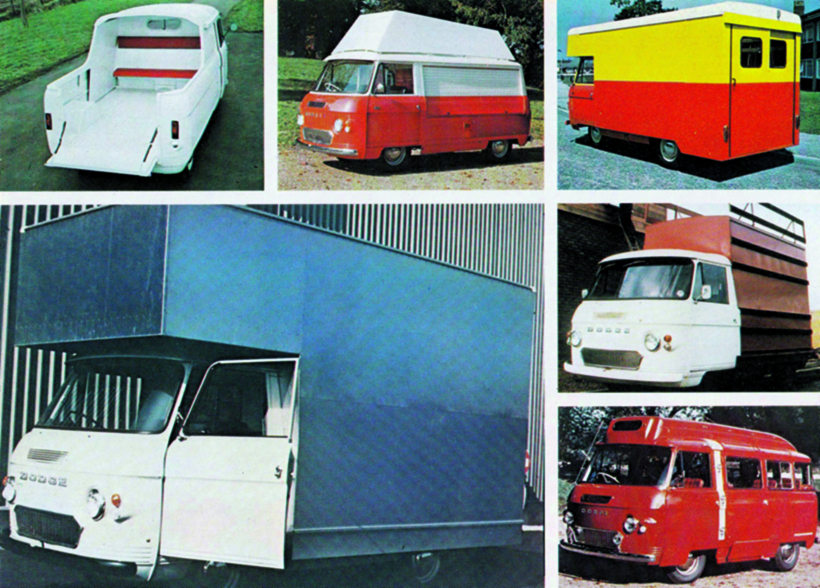
1976 variations on specialist coachwork.
Overall, I think that to get the old girl from the grey banger to a clean, tidy, show-worthy classic commercial on a budget, probably cost approximately £1,000 plus plenty of lost skin on the fingers from the sandpaper!
After this, I stayed with the Rootes cars, including several Hillman Hunters and Humber Sceptres, a Humber Hawk limousine and, more recently, a Hillman Super Minx ambulance. So the parent marque will always have a special part in my heart.
For a money-saving subscription to Heritage Commercials magazine, simply click here
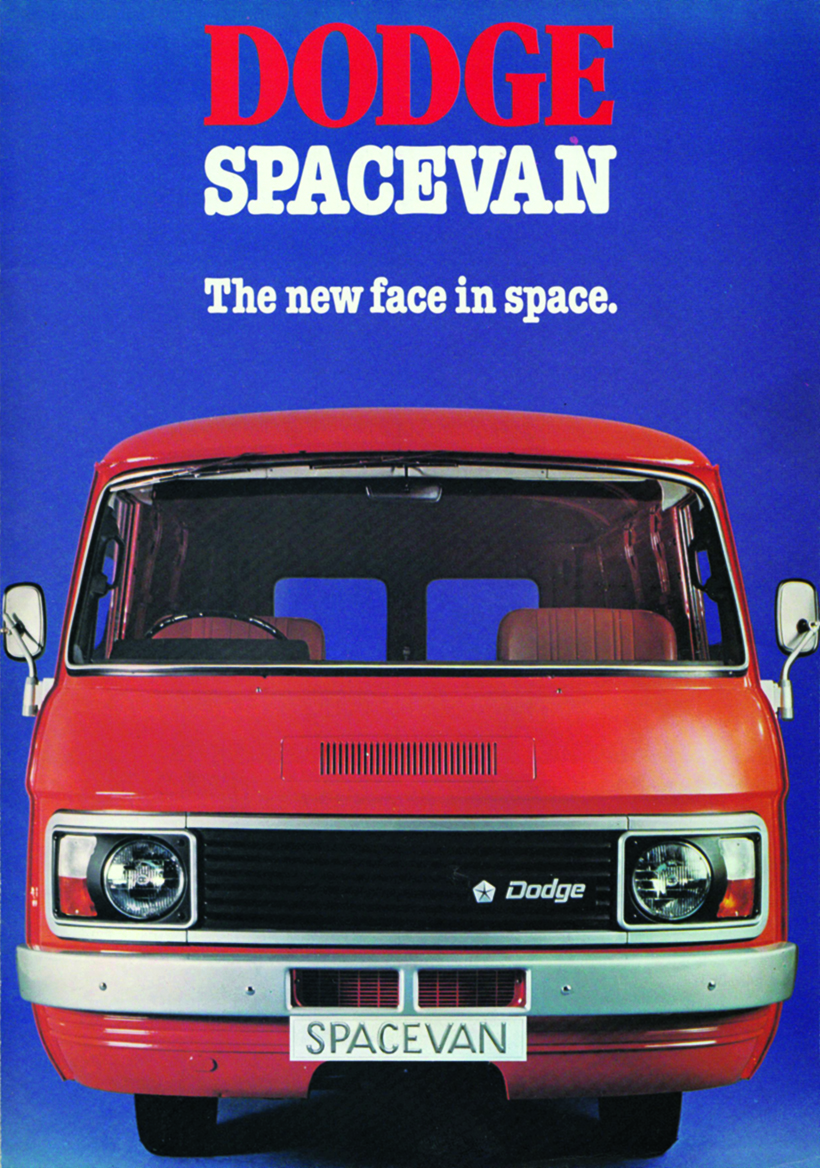
A 1977, new-look Dodge Spacevan advert.

Previous Post
Beautifully-restored 1970 Atkinson Viewline
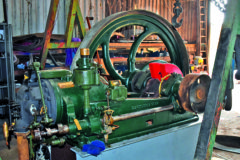
Next Post
Blackstone stationary engine turning again



